Dario Piga
Learning Low-Dimensional Embeddings for Black-Box Optimization
May 02, 2025Abstract:When gradient-based methods are impractical, black-box optimization (BBO) provides a valuable alternative. However, BBO often struggles with high-dimensional problems and limited trial budgets. In this work, we propose a novel approach based on meta-learning to pre-compute a reduced-dimensional manifold where optimal points lie for a specific class of optimization problems. When optimizing a new problem instance sampled from the class, black-box optimization is carried out in the reduced-dimensional space, effectively reducing the effort required for finding near-optimal solutions.
Manifold meta-learning for reduced-complexity neural system identification
Apr 16, 2025



Abstract:System identification has greatly benefited from deep learning techniques, particularly for modeling complex, nonlinear dynamical systems with partially unknown physics where traditional approaches may not be feasible. However, deep learning models often require large datasets and significant computational resources at training and inference due to their high-dimensional parameterizations. To address this challenge, we propose a meta-learning framework that discovers a low-dimensional manifold within the parameter space of an over-parameterized neural network architecture. This manifold is learned from a meta-dataset of input-output sequences generated by a class of related dynamical systems, enabling efficient model training while preserving the network's expressive power for the considered system class. Unlike bilevel meta-learning approaches, our method employs an auxiliary neural network to map datasets directly onto the learned manifold, eliminating the need for costly second-order gradient computations during meta-training and reducing the number of first-order updates required in inference, which could be expensive for large models. We validate our approach on a family of Bouc-Wen oscillators, which is a well-studied nonlinear system identification benchmark. We demonstrate that we are able to learn accurate models even in small-data scenarios.
In-Context Learning for Zero-Shot Speed Estimation of BLDC motors
Apr 01, 2025Abstract:Accurate speed estimation in sensorless brushless DC motors is essential for high-performance control and monitoring, yet conventional model-based approaches struggle with system nonlinearities and parameter uncertainties. In this work, we propose an in-context learning framework leveraging transformer-based models to perform zero-shot speed estimation using only electrical measurements. By training the filter offline on simulated motor trajectories, we enable real-time inference on unseen real motors without retraining, eliminating the need for explicit system identification while retaining adaptability to varying operating conditions. Experimental results demonstrate that our method outperforms traditional Kalman filter-based estimators, especially in low-speed regimes that are crucial during motor startup.
dynoGP: Deep Gaussian Processes for dynamic system identification
Feb 08, 2025Abstract:In this work, we present a novel approach to system identification for dynamical systems, based on a specific class of Deep Gaussian Processes (Deep GPs). These models are constructed by interconnecting linear dynamic GPs (equivalent to stochastic linear time-invariant dynamical systems) and static GPs (to model static nonlinearities). Our approach combines the strengths of data-driven methods, such as those based on neural network architectures, with the ability to output a probability distribution. This offers a more comprehensive framework for system identification that includes uncertainty quantification. Using both simulated and real-world data, we demonstrate the effectiveness of the proposed approach.
Integrating Reinforcement Learning with Foundation Models for Autonomous Robotics: Methods and Perspectives
Oct 21, 2024



Abstract:Foundation models (FMs), large deep learning models pre-trained on vast, unlabeled datasets, exhibit powerful capabilities in understanding complex patterns and generating sophisticated outputs. However, they often struggle to adapt to specific tasks. Reinforcement learning (RL), which allows agents to learn through interaction and feedback, offers a compelling solution. Integrating RL with FMs enables these models to achieve desired outcomes and excel at particular tasks. Additionally, RL can be enhanced by leveraging the reasoning and generalization capabilities of FMs. This synergy is revolutionizing various fields, including robotics. FMs, rich in knowledge and generalization, provide robots with valuable information, while RL facilitates learning and adaptation through real-world interactions. This survey paper comprehensively explores this exciting intersection, examining how these paradigms can be integrated to advance robotic intelligence. We analyze the use of foundation models as action planners, the development of robotics-specific foundation models, and the mutual benefits of combining FMs with RL. Furthermore, we present a taxonomy of integration approaches, including large language models, vision-language models, diffusion models, and transformer-based RL models. We also explore how RL can utilize world representations learned from FMs to enhance robotic task execution. Our survey aims to synthesize current research and highlight key challenges in robotic reasoning and control, particularly in the context of integrating FMs and RL--two rapidly evolving technologies. By doing so, we seek to spark future research and emphasize critical areas that require further investigation to enhance robotics. We provide an updated collection of papers based on our taxonomy, accessible on our open-source project website at: https://github.com/clmoro/Robotics-RL-FMs-Integration.
Enhanced Transformer architecture for in-context learning of dynamical systems
Oct 04, 2024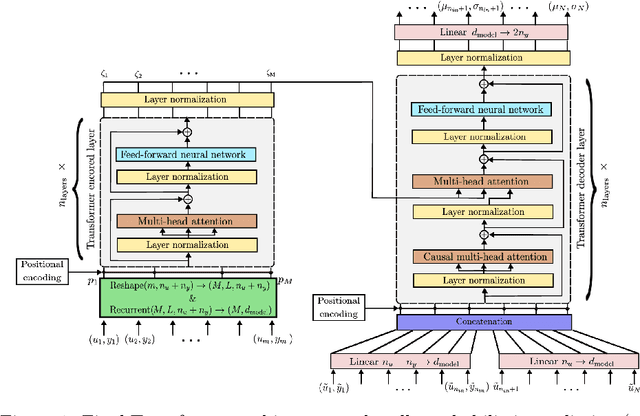

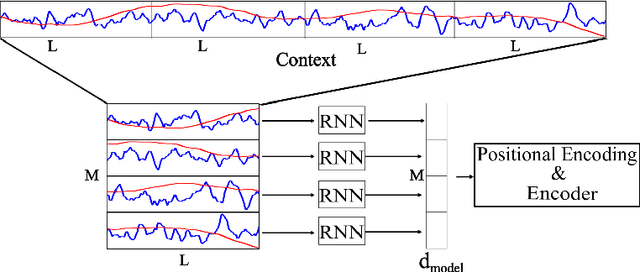

Abstract:Recently introduced by some of the authors, the in-context identification paradigm aims at estimating, offline and based on synthetic data, a meta-model that describes the behavior of a whole class of systems. Once trained, this meta-model is fed with an observed input/output sequence (context) generated by a real system to predict its behavior in a zero-shot learning fashion. In this paper, we enhance the original meta-modeling framework through three key innovations: by formulating the learning task within a probabilistic framework; by managing non-contiguous context and query windows; and by adopting recurrent patching to effectively handle long context sequences. The efficacy of these modifications is demonstrated through a numerical example focusing on the Wiener-Hammerstein system class, highlighting the model's enhanced performance and scalability.
RoboMorph: In-Context Meta-Learning for Robot Dynamics Modeling
Sep 18, 2024



Abstract:The landscape of Deep Learning has experienced a major shift with the pervasive adoption of Transformer-based architectures, particularly in Natural Language Processing (NLP). Novel avenues for physical applications, such as solving Partial Differential Equations and Image Vision, have been explored. However, in challenging domains like robotics, where high non-linearity poses significant challenges, Transformer-based applications are scarce. While Transformers have been used to provide robots with knowledge about high-level tasks, few efforts have been made to perform system identification. This paper proposes a novel methodology to learn a meta-dynamical model of a high-dimensional physical system, such as the Franka robotic arm, using a Transformer-based architecture without prior knowledge of the system's physical parameters. The objective is to predict quantities of interest (end-effector pose and joint positions) given the torque signals for each joint. This prediction can be useful as a component for Deep Model Predictive Control frameworks in robotics. The meta-model establishes the correlation between torques and positions and predicts the output for the complete trajectory. This work provides empirical evidence of the efficacy of the in-context learning paradigm, suggesting future improvements in learning the dynamics of robotic systems without explicit knowledge of physical parameters. Code, videos, and supplementary materials can be found at project website. See https://sites.google.com/view/robomorph/
LightCPPgen: An Explainable Machine Learning Pipeline for Rational Design of Cell Penetrating Peptides
May 31, 2024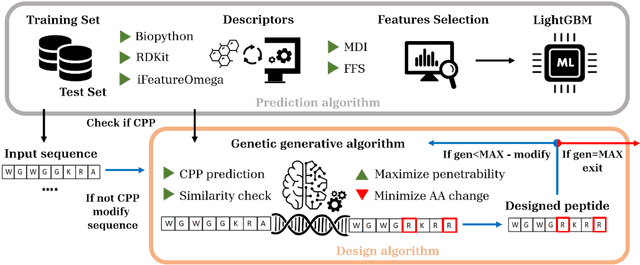

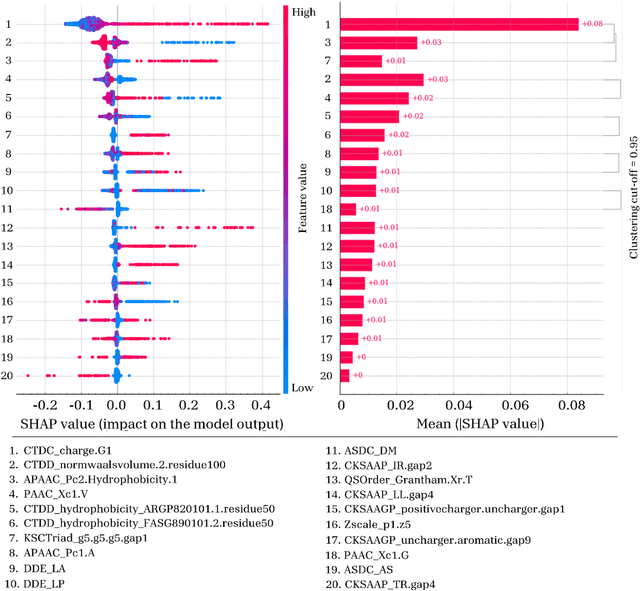
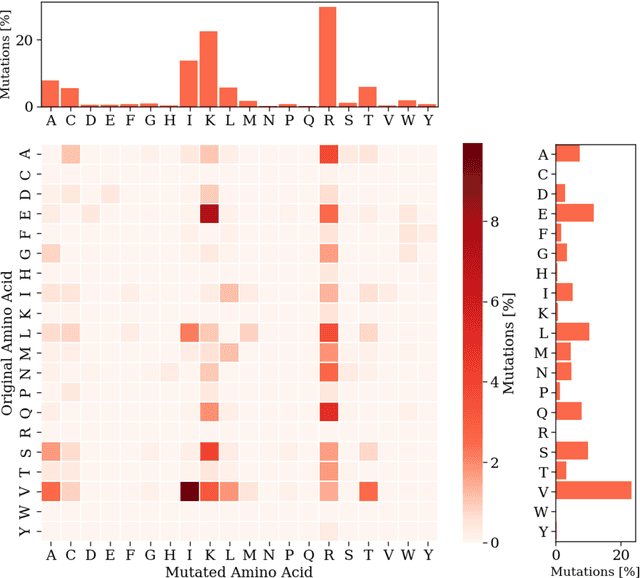
Abstract:Cell-penetrating peptides (CPPs) are powerful vectors for the intracellular delivery of a diverse array of therapeutic molecules. Despite their potential, the rational design of CPPs remains a challenging task that often requires extensive experimental efforts and iterations. In this study, we introduce an innovative approach for the de novo design of CPPs, leveraging the strengths of machine learning (ML) and optimization algorithms. Our strategy, named LightCPPgen, integrates a LightGBM-based predictive model with a genetic algorithm (GA), enabling the systematic generation and optimization of CPP sequences. At the core of our methodology is the development of an accurate, efficient, and interpretable predictive model, which utilizes 20 explainable features to shed light on the critical factors influencing CPP translocation capacity. The CPP predictive model works synergistically with an optimization algorithm, which is tuned to enhance computational efficiency while maintaining optimization performance. The GA solutions specifically target the candidate sequences' penetrability score, while trying to maximize similarity with the original non-penetrating peptide in order to retain its original biological and physicochemical properties. By prioritizing the synthesis of only the most promising CPP candidates, LightCPPgen can drastically reduce the time and cost associated with wet lab experiments. In summary, our research makes a substantial contribution to the field of CPP design, offering a robust framework that combines ML and optimization techniques to facilitate the rational design of penetrating peptides, by enhancing the explainability and interpretability of the design process.
Model order reduction of deep structured state-space models: A system-theoretic approach
Mar 21, 2024Abstract:With a specific emphasis on control design objectives, achieving accurate system modeling with limited complexity is crucial in parametric system identification. The recently introduced deep structured state-space models (SSM), which feature linear dynamical blocks as key constituent components, offer high predictive performance. However, the learned representations often suffer from excessively large model orders, which render them unsuitable for control design purposes. The current paper addresses this challenge by means of system-theoretic model order reduction techniques that target the linear dynamical blocks of SSMs. We introduce two regularization terms which can be incorporated into the training loss for improved model order reduction. In particular, we consider modal $\ell_1$ and Hankel nuclear norm regularization to promote sparsity, allowing one to retain only the relevant states without sacrificing accuracy. The presented regularizers lead to advantages in terms of parsimonious representations and faster inference resulting from the reduced order models. The effectiveness of the proposed methodology is demonstrated using real-world ground vibration data from an aircraft.
Synthetic data generation for system identification: leveraging knowledge transfer from similar systems
Mar 08, 2024Abstract:This paper addresses the challenge of overfitting in the learning of dynamical systems by introducing a novel approach for the generation of synthetic data, aimed at enhancing model generalization and robustness in scenarios characterized by data scarcity. Central to the proposed methodology is the concept of knowledge transfer from systems within the same class. Specifically, synthetic data is generated through a pre-trained meta-model that describes a broad class of systems to which the system of interest is assumed to belong. Training data serves a dual purpose: firstly, as input to the pre-trained meta model to discern the system's dynamics, enabling the prediction of its behavior and thereby generating synthetic output sequences for new input sequences; secondly, in conjunction with synthetic data, to define the loss function used for model estimation. A validation dataset is used to tune a scalar hyper-parameter balancing the relative importance of training and synthetic data in the definition of the loss function. The same validation set can be also used for other purposes, such as early stopping during the training, fundamental to avoid overfitting in case of small-size training datasets. The efficacy of the approach is shown through a numerical example that highlights the advantages of integrating synthetic data into the system identification process.
 Add to Chrome
Add to Chrome Add to Firefox
Add to Firefox Add to Edge
Add to Edge